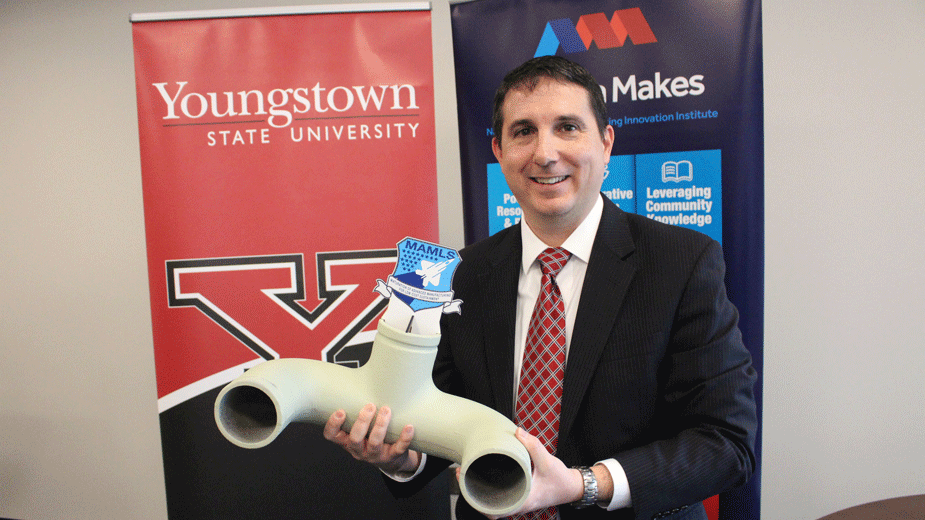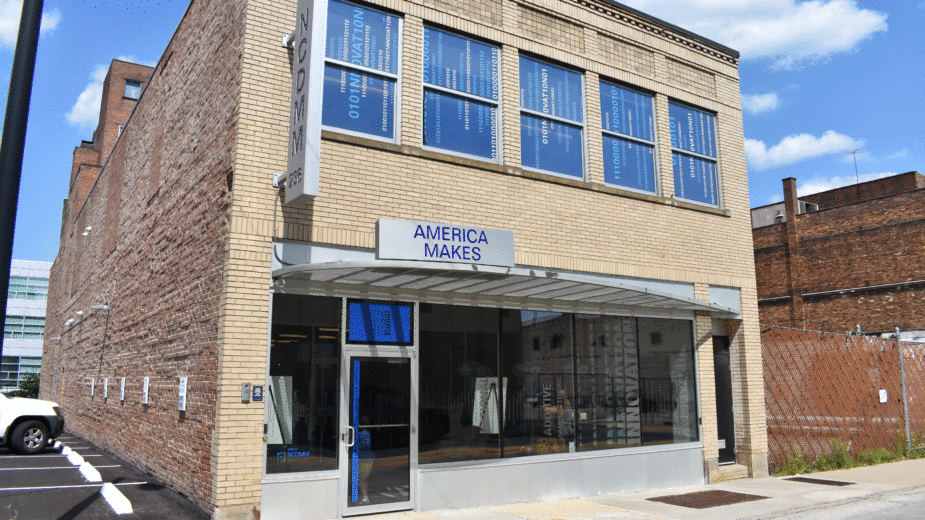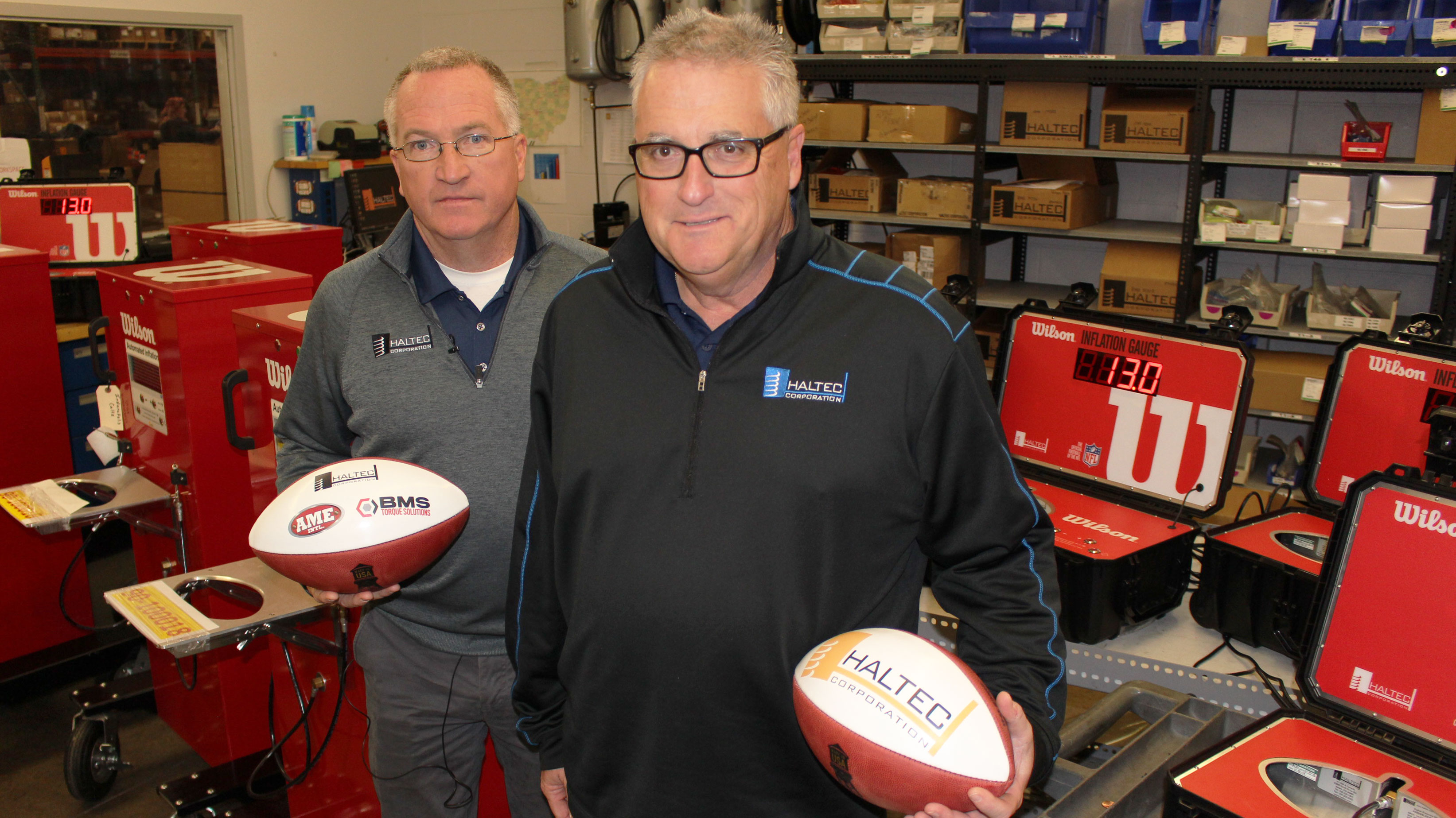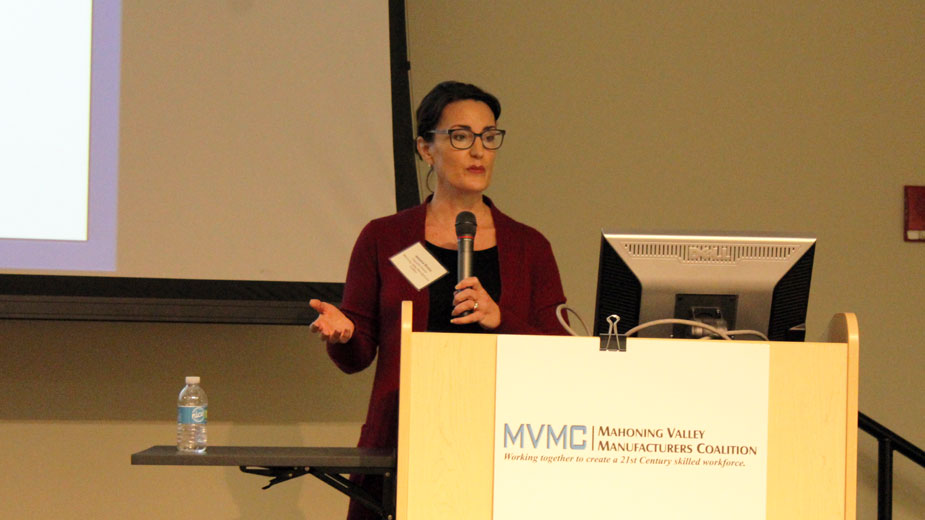YSU-Led Advanced Manufacturing Initiative Aids Air Force
YOUNGSTOWN, Ohio – A consortium made up of Youngstown State University, research and academic institutions, manufacturers, and major players in the defense industry has completed the first phase of a project that uses additive manufacturing to replace parts on aging Air Force aircraft, officials announced Wednesday.
Representatives of aerospace contractors such as Boeing, Raytheon and Lockheed Martin have partnered with YSU, America Makes, the University of Dayton Research Institute, and the National Center for Defense Manufacturing and Machining to complete the $8 million project.
“The average age of an aircraft in the Air Force inventory is 27 years,” said Brett Conner, director of YSU’s Advanced Manufacturing and Research Center. “What we want to do is use advanced manufacturing to help us return aircraft to the field quicker, speed up maintenance and depot operations, and be able to get aircraft out the door and improve mission availability.”
The project leaders are holding two days of meetings — yesterday and today — at YSU to review the results of the research. The project included about 25 universities, companies, research institutions, and military bases.
Phase I of the program — Maturation of Advanced Manufacturing for Low-Cost Sustainment or MAMLS — focused on visiting numerous air bases, including the Youngstown Air Reserve Station in Vienna, and identifying some of the issues related to sourcing replacement parts for older aircraft, Conner said.
The team then examined ways in which additive manufacturing could help solve some of these challenges, he said.
“In some cases, we used additive manufacturing to make tooling, and then the part was produced,” he said. “In other cases, we directly printed the part.”
As an example, Dave Siddle, senior project manager at NCDMM, displayed an aluminum tubular component of a modular spray system that is used on C-130 aircraft stationed at the Youngstown Air Reserve Station The Air Reserve Station is home to the 910th Airlift Wing, and operates the U.S. Department of Defense’s sole fixed-wing aerial spray unit.
“This was a part they said was a very big problem to procure,” he said, since these systems are 30 years old. As such, it could take months before a replacement part is fitted, machined, welded and delivered to the base. Meantime, the aircraft spray systems were idled.
The solution was to eliminate the fabrication process altogether by using additive manufacturing to print a sand core in which the part could be cast instead of piecing and welding together a new component.
“We created a model of the part, and used that to print the sand mold, and we poured the casting,” he said.
As a result, the time it took to manufacture the replacement part was reduced from several months to less than one month, Siddle said. “The parts can be customized, and it’s a very good example of how this MAMLS program provides solutions to the Air Force for these kind of components,” he said.
Among the other components that were 3-D printed were small stamping tools used to manufacture metallic parts. And, the project elicited solutions such as 3-D printed polymer brackets that are used to hold electronic tablets in place so mechanics and engineers could read digital instructions while working on aircraft.
Siddle said even small, but necessary, parts — a plastic knob on a control panel in a cockpit, for example — could benefit from additive manufacturing because they are so difficult to replace on older aircraft.
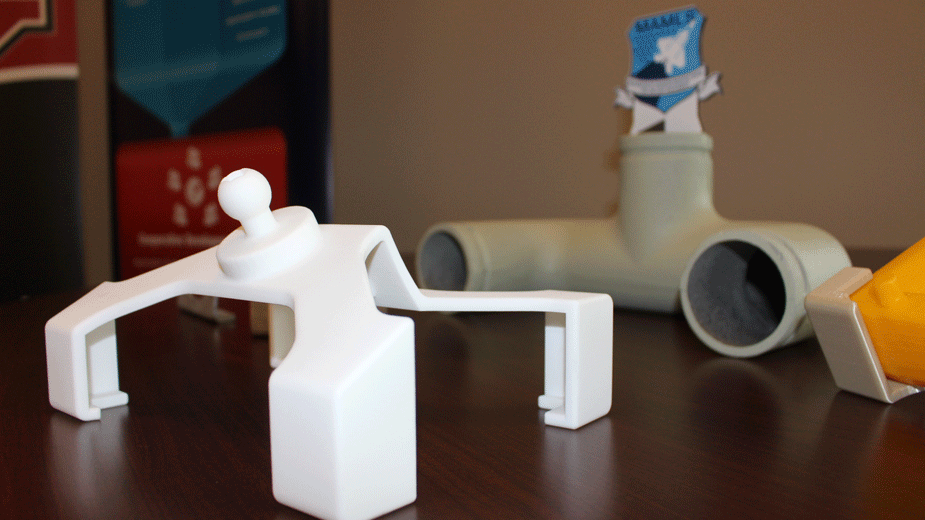
The Phase I segment of the program also helped identify companies that could form a reliable supply chain to support new advanced manufacturing initiatives.
“Additive manufacturing really opens up the pathway for much more rapid innovation,” said Brian Rice, a business development agent for the University of Dayton Research Institute. “What we tried to focus on in this program is to work with small businesses and get them connected with leaders such as GE and Boeing so they could learn about the technology and become supply chain partners.”
Local involvement in the project included YSU, The 910th Airlift Wing, The Youngstown Business Incubator, Youngstown-based M-7 Technologies, and Humtown Products of Columbiana. Other Ohio-based companies and institutions are Case Western Reserve University, Wright-Patterson Air Force Base, Basetech Inc., Slice Manufacturing Studios, DRT Mfg. Co., GE Aviation, and UDRI.
Additional institutions such as Boeing Co., Raytheon, Lockheed Martin, 3D Systems Corp., Optomec, the American Foundry Society, Honeywell International, Penn State University, the University of Northern Iowa, and the National Center for Manufacturing Sciences, participated in the project.
Phase II of the initiative is underway, YSU’s Conner said. This is focused on using direct printing to produce replacement spare parts and in the process address the challenges used to test and qualify flight-critical components for use on aircraft.
Phase III involves transitioning the technology from Phase I to military depots and operational units, he said. Together, the entire program’s funding amounts to more than $27 million.
YSU President Jim Tressel said this project is yet another demonstration of the Mahoning Valley’s growing stature in advanced manufacturing, pointing to university-led initiatives such as the Mahoning Valley Innovation and Commercialization Center, now under development downtown.
“We’re really excited to be part of this,” Tressel said. “It’s yet another indicator of the increasingly important role that Youngstown, the university and the region plays in manufacturing innovation on a national and worldwide basis.”
VIDEO:
‘3 Minutes With’ Brett Connor and Brian RIce
Pictured at top: Brett Conner, director of the Advanced Additive Manufacturing Research Center at Youngstown State University.
Copyright 2024 The Business Journal, Youngstown, Ohio.
